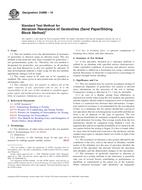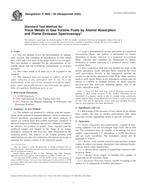1.1 This test method covers the determination of particle size distributions of refractory metal powders. Experience has shown that this test method is satisfactory for the analysis of elemental tungsten, tungsten carbide, molybdenum, and tantalum powders, all with an as-supplied Fisher number of 6 [mu]m or less, as determined by Test Method B 330. Other refractory metal powders (for example, elemental metals, carbides, and nitrides) may be analyzed using this test method with caution as to significance until actual satisfactory experience is developed (see 7.2). The procedure covers the determination of particle size distribution of the powder in the following two conditions:
1.1.1 As the powder is supplied (as-supplied), and
1.1.2 After the powder has been deagglomerated by rod milling as described in Practice B 859.
1.2 This test method is applicable to particles of uniform density and composition having a particle size distribution range of 0.1 to 100 [mu]m. However, with tungsten, molybdenum, tantalum, and tungsten carbide powders, analyses are limited to a particle size distribution range of 0.1 to 30 [mu]m.
1.3 This standard does not purport to address all of the safety concerns, if any, associated with its use. It is the responsibility of the user of this standard to establish appropriate safety and health practices and determine the applicability of regulatory limitations prior to use. Specific hazard information is given in Section 7.
Product Details
- Published:
- 03/10/1998
- Number of Pages:
- 3
- File Size:
- 1 file , 29 KB


